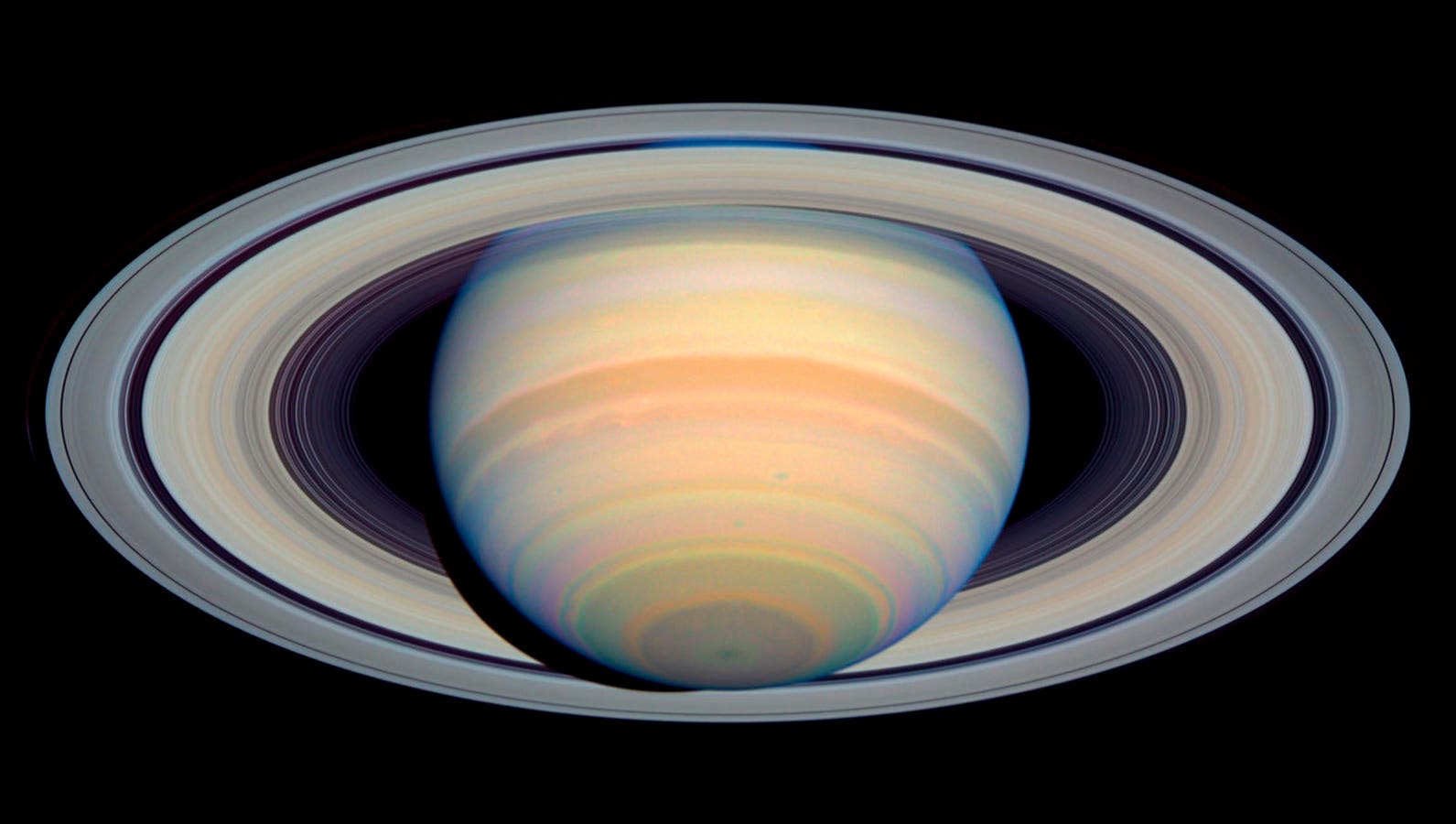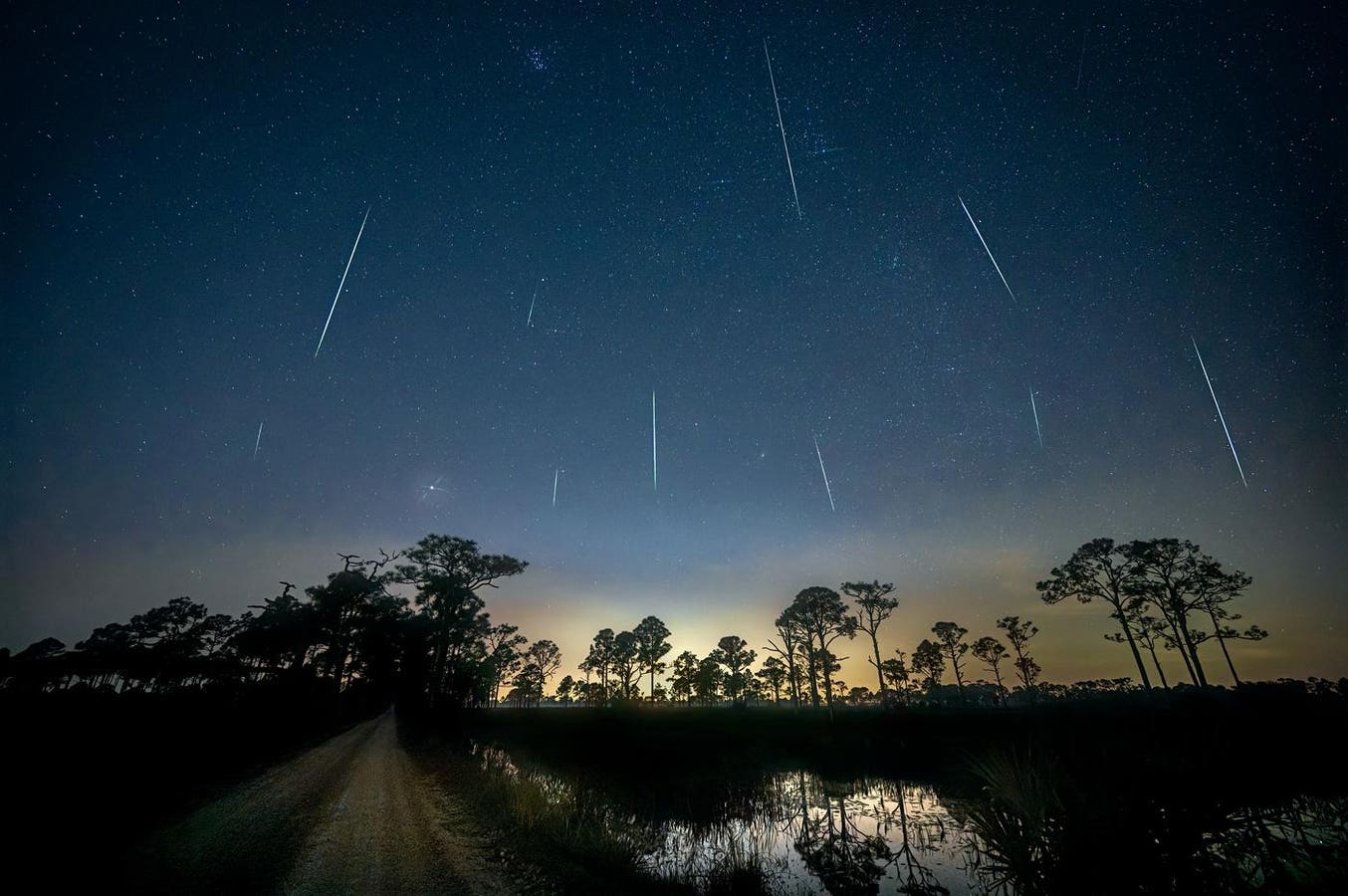E
This image of Saturn obtained 14 September, 2003, shows the planet’s rings when they were at a maximum tilt of 26 degrees toward Earth. Saturn experiences seasonal tilts away from and towards the Sun, much the same way Earth does. This happens over the course of its 29.5-year orbit. This means that approximately every 30 years, Earth observers can catch their best glimpse of Saturn’s South Pole and the southern side of the planet’s rings, as illustrated in the images. This image was captured by NASA ‘s Hubble Space Telescope. AFP PHOTO/NASA (Photo by – / NASA / AFP) (Photo by -/NASA/AFP via Getty Images)
NASA/AFP via Getty Images
ach Monday, I pick out North America’s celestial highlights for the week ahead (which also apply to mid-northern latitudes in the Northern Hemisphere). Check my main feed for more in-depth articles on stargazing, astronomy, eclipses and more.
The Night Sky This Week: Sept. 15-21, 2025
This week, Saturn takes center stage at its yearly opposition, shining at its biggest and brightest for 2025. A new moon late in the week causes an eclipse in the Southern Hemisphere, but ensures dark skies perfect for grabbing a final glimpse of the Milky Way before it sinks until April. Add A diamond in the sky and a close conjunction of Venus and Regulus, and it makes for a busy week for those looking up. Here’s everything you need to know about stargazing and astronomy this week:
Tuesday, Sept. 16: A ‘Diamond’ In The Sky
Stellarium
Tuesday, Sept. 16: A ‘Diamond’ In The Sky
Before dawn, a slender 28%-lit waning crescent moon appears near Jupiter, with the bright stars Castor and Pollux of Gemini to its left. Together they form a neat diamond shape, each point about four degrees apart.
Thursday, Sept. 18: Crescent Moon, Venus And Regulus
Stellarium
Thursday, Sept. 18: Crescent Moon, Venus And Regulus
Before sunrise, an 11%-lit crescent moon is positioned directly above brilliant Venus. Below Venus is Regulus, the brightest star in Leo. Look for soft Earthshine on the moon‚ sunlight reflected from clouds that gently illuminates the shadowed lunar surface.
Friday, Sept. 19: Venus And Regulus ‘Kiss’ the Moon
Stellarium
Friday, Sept. 19: Venus And Regulus ‘Kiss’ the Moon
A mere 6%-lit crescent moon joins Venus and Regulus in a tight, half-degree grouping just above the east-northeast horizon about an hour before sunrise. This is one of the month’s best naked-eye conjunctions.
Saturday, Sept. 20: Crescent Moon
About 90 minutes before sunrise, a paper-thin 2%-lit crescent moon rises beneath Venus and Regulus. You’ll need a low unobstructed horizon, a pair of binoculars, and patience to find it.
These Hubble Space Telescope images, captured from 1996 to 2000, show Saturn”s rings open up from just past edge-on to nearly fully open as it moves from autumn towards winter in its Northern Hemisphere, part of the course of its 29-year journey around the Sun. (Photo courtesy of NASA via Getty Images)
Getty Images
Sunday, Sept. 21: Saturn At Opposition, New Moon And A Partial Solar Eclipse
Tonight is the best night of the year to view Saturn. At opposition, it rises at sunset, sets at sunrise, and shines at magnitude 0.6. Through a small telescope, Saturn’s rings will be nearly edge-on but still visible.
This picture taken on October 25, 2022 shows a view of the moon partially obscuring the sun disk during a partial solar eclipse visible from Baghdad University in Iraq’s capital. (Photo by AHMAD AL-RUBAYE / AFP) (Photo by AHMAD AL-RUBAYE/AFP via Getty Images)
AFP via Getty Images
The new moon at 2:54 p.m. EDT ensures the darkest skies of the month, and in some parts of the world also causes a partial solar eclipse. Observers in New Zealand, Fiji, Tonga, and Antarctica will see a partial solar eclipse at sunrise, with the moon covering up to 79% of the sun.
The times and dates given apply to mid-northern latitudes. For the most accurate location-specific information, consult online planetariums like Stellarium.
Wishing you clear skies and wide eyes.








